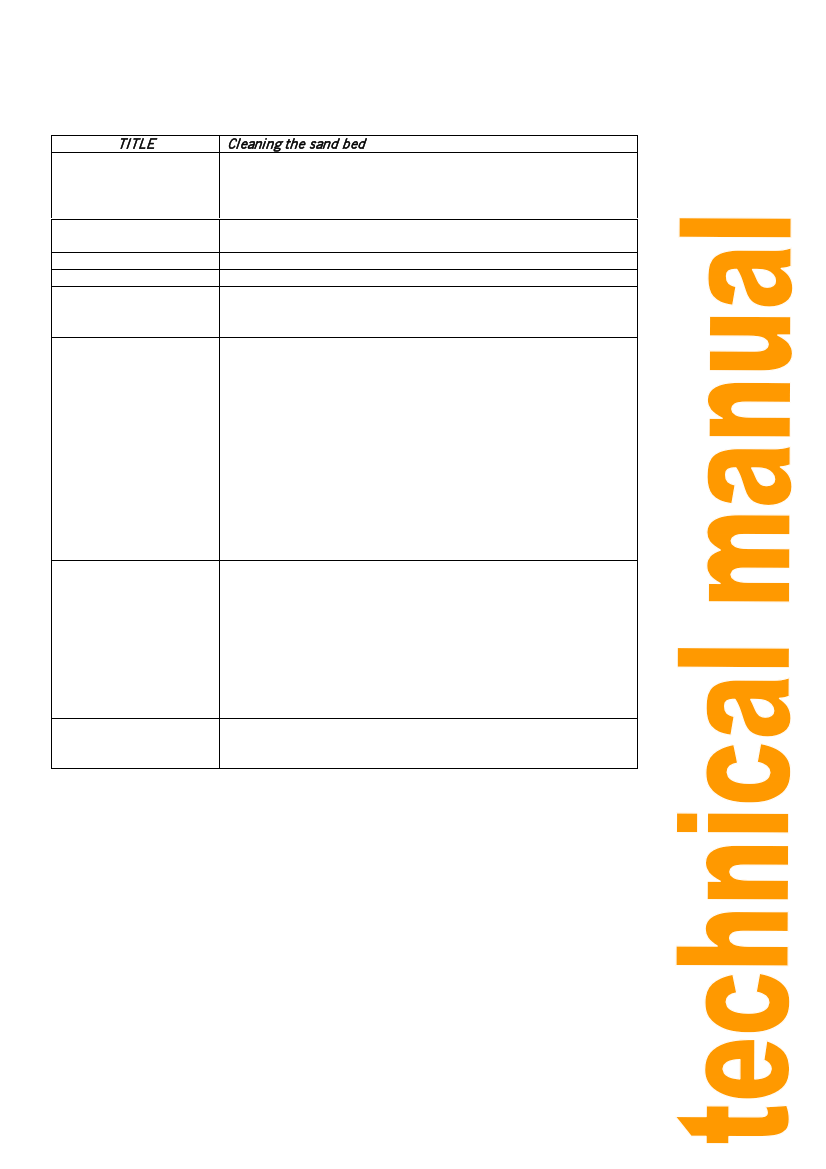
Slow sand filtration water treatment plants
Practical Action
TITLE
OBJECTIVE
MATERIAL
METHOD
TIME
INTRODUCTION
DEVELOPMENT
PRACTICAL WORK
REVISION
Cleaning the sand bed
The participants will be capable of preparing the filter for
cleaning, carrying out two cleaning methods, recognising when
each method is required and then putting the filter back in
operation.
A slow filter to be cleaned with the damp filter-harrowing method,
removing the filtered material. A shovel, a pick and a rake.
Field demonstration
Two and a half hours
Explain why it is important to clean the filter properly to ensure
its effectiveness and produce safe water. Explain the steps to be
followed in general terms.
Demonstrate the steps to be followed, placing emphasis on the
most important:
1) Show the participants when cleaning is necessary
2) Explain the previous day’s operation: shut the inlet valve
and allow the water to filter at a declining rate.
3) Explain why each valve must be handled properly
4) Show them how to rake with an ascending flow and allow
them to complete the operation
5) Show them how to rake the dry sand and allow them to
complete the operation
6) Show them how to put the filter back into operation
7) Summarise the steps followed during the filter cleaning
procedure
1) Ask the participants to wash the filtration bed, explaining
what they are going to do before each step. Correct any
mistakes immediately.
2) Ask them to repeat the process under the trainer’s
supervision.
3) Ask them to repeat the process again whilst the trainer
makes a note of their performance and their possible
weak points.
Revise the parts that the participants were unsure of.
33